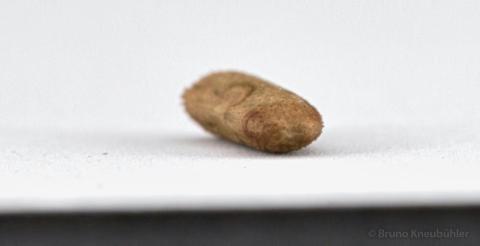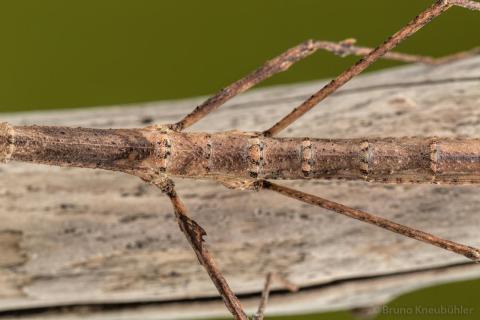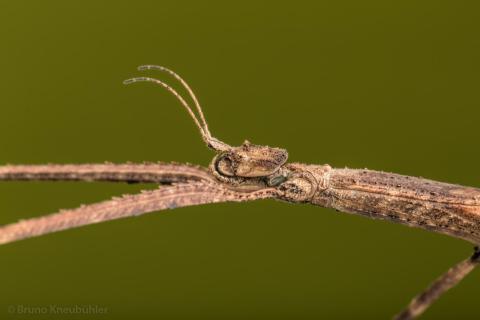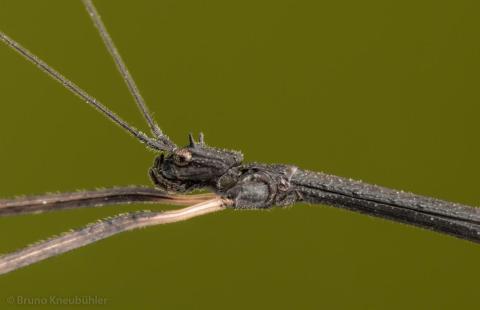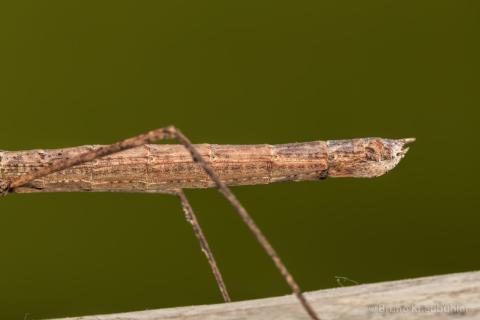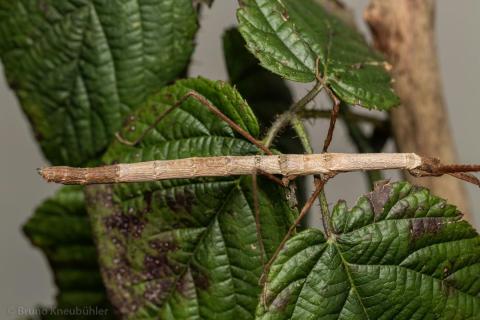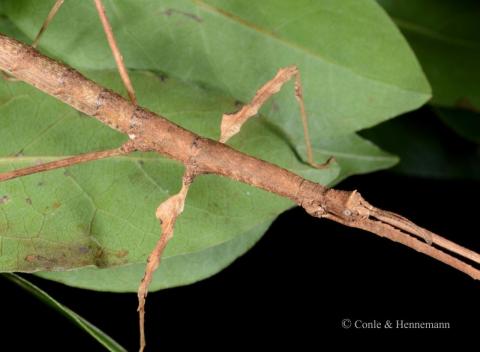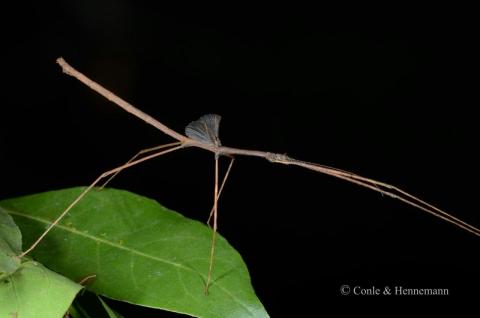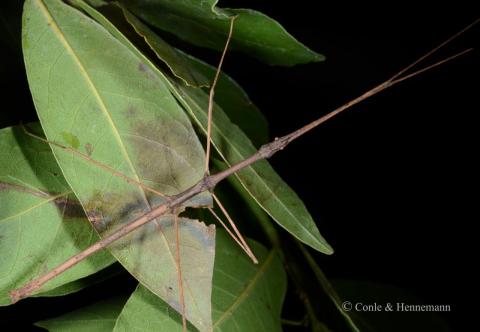
Genus
Stock
CLP
591
PSG
379
Culture status
In culture
Foodplants
Bramble (Rubus spp.)
Beech (Fagus sylvatica)
Hypericum spp.
Breeding notes
(by Bruno Kneubuehler)
General Notes
- described by Joachim Bresseel and Jerome Constant in 2015, download PDF
- Lobofemora scheirei is the type species of the new genus Lobofemora
_________________
Culture History
- 2012 - first successful culture by Oskar Conle (Germany) and Bruno Kneubuehler
- 2012 - distributed to other breeders as Medaurini sp. „Cat Tien“
- 2015 - this culture should now be called Lobofemora scheirei "Cat Tien"
_________________
Origin
- Cat Tien NP in Vietnam
_________________
Females
- inconspicuous, typical phasmids
- about 8 – 9 cm long
- very variable coloration – different brown shades with variable markings
- some females are very contrasty brown-whitish colored
- short, brown, elegantly forward curved antennae
- head with two bigger bumps or spines
- body strongly granulated, especially the thorax area
- midlegs with bigger lobes
- subgenital plate as long as the abdominal ending
_________________
Males
- typical thin phasmids
- about 6 – 6.5 cm long
- coloration is consistent amongst males
- dark, almost black
- legs light brown with dark knees
- body strongly granulated, especially the thorax area
- short, black antennae – not forward bent as in females
- short hindwings and very short forewings
- anal region of the hindwings (the membranous part) is black
- 2 big spines on the head
_________________
Nymphs
- about 17 mm long (L1)
- long-legged nymphs
- green-dark brown
- short antennae
- by L3 it is quite easy to distinguish ♀♂ (by the naked eye)
_________________
Eggs
- about 4 x 1.5 mm
- brown
- elongate-oval
- matt
- granulated surface
- no capitulum present on the operculum (lid)
- fringe around the operculum
- micropylar plate is wing-shaped
- eggs break very easily
_________________
Food Plants
- it is very much recommendede to cut away the edges of the leaves for nymphs in L1
- bramble (Rubus spp.)
is very well accepted by nymphs and adults - beech (Fagus sylvatica)
is very well accepted by nymphs and adults - Hypericum
is very well accepted by adults (not tested with nymphs)
_________________
Behaviour
- nymphs as well as adult are passive during the day and out and about feeding at night
- nymphs and adults often drop to the ground when they feel threatened (like when they are touched). But usually they freeze again immediately
- if being touched, small nymphs (L1) are passive and feign death
- no defensive spray has been observed
- males can open and close their wings with a rustling noise when they feel threatened
- matings are frequent during the night, and males do not stay with the same female for a longer period
- females try to stick their eggs into cracks and holes. Sponges, cut into thin slices, are very well accepted for this (see pics on the left). And it is easy to collect the eggs from such sponge slices
- only few eggs will lay on the cage floor, if the female find a suitable substrate into which they can stick their eggs
- as the eggs break so easily, therefore sticking their eggs into holes and cracks is a way to protect the eggs
_________________
Developement
- the short incubation time (HH-incubation on slightly damp sand at 20 - 23 °C) is about 6 - 8 weeks only !
- hatching ratio was very high (> 50%)
- males will be adult after about 3- 3.5 months (at 20 – 23°C), females after about 3.5 – 4 months
- females start laying eggs after about 2 – 3 weeks
- about 15 – 20 eggs per female and week
- adults can live for several months
_________________
Breeding Notes
- my general notes on how to breed phasmids are an integral part of this care sheet ...
- it is very easy to breed this species
- for a succesful culture it is highly recommend to keep nymphs seperate from the adults. This makes it much easier to monitor their developement and they are protected from being disturbed or even harmed by the bigger adults (like during their moults)
- keep the nymphs in a cage with good ventilation, but take care that the humidity does not drop too low
- a constantly wet paper towel on the floor of the cage helps raising humidity
- a humidity level of about 60+ % rH (for adults) and 75+ % rH (for nymphs) seems to be fine
- nymphs can be kept in a Faunabox (or similar cages like Faunarium)
- move nymphs to a bigger cage as they grow bigger
- a cage of at least 30 x 30 x 30 cm should be provided for 3 – 4 adult couples
- I recommend to keep only one species per cage – the culture is much more likely to be successful than in an overcrowed cage
- I have never sprayed nymphs, adults or their cage with water
- make sure that nymphs, which are about to undergo their adult moult, do not find places in the cage which would not offer them enough space beneath to moult successfully

